
Please find below another guest post from MacroBusiness reader, Nathan Webb. Enjoy!
The whole reason that I started looking at seasonal adjustments of the AFG volumes was that I couldn’t stand the erratic and false headlines that AFG were producing. It’s a symptom of them not understanding what actually drives their monthly totals, which is primarily the number of weekdays in each month. When there is a big fluctuation in the number of weekdays from one month to the next, you can expect a big fluctuation in the AFG volumes as well. This is excluding public holidays, so with both Easter and Anzac Day falling this month, the raw numbers were going to be bad.
I made a note of that in March, after the February figures were released:
… March is expected to be another gain in the raw numbers (up to 7220), before there is seasonal drop in April, to 5880. This year, more than most, is going to be very jumpy, so get ready for some wild headlines.
AFG delivered as promised:
SOFT APRIL HOME LOAN FIGURES EXPOSES NEED FOR CONFIDENCE BOOSTING RATE CUTS
Reduced demand for home loans in April shows why meaningful home loan rate reductions are necessary according to AFG, Australia’s largest mortgage broker.
No it didn’t. The actual volumes, 5937, were slightly above the forecast, continuing a string of recent stability. The market looks to me to have settled for the rest of the year, with very little nominal change in prices.
Let’s start, as per usual, with a look at the seasonal model versus actuals. The key thing to note here, besides the Easter dip, is that next month is expected to come in at a 5 month high, possibly even the highest since 2009. Let me save AFG some time, and offer a headline now: “DOUBLE RATE CUT HAS DESIRED EFFECT AS HOUSING MARKET SPRINGS TO LIFE”, followed by a drop in June: “UNEXPECTED DROP IN HOME LOAN FIGURES EXPOSE FRAGILITY OF AUSTRALIAN ECONOMY”.
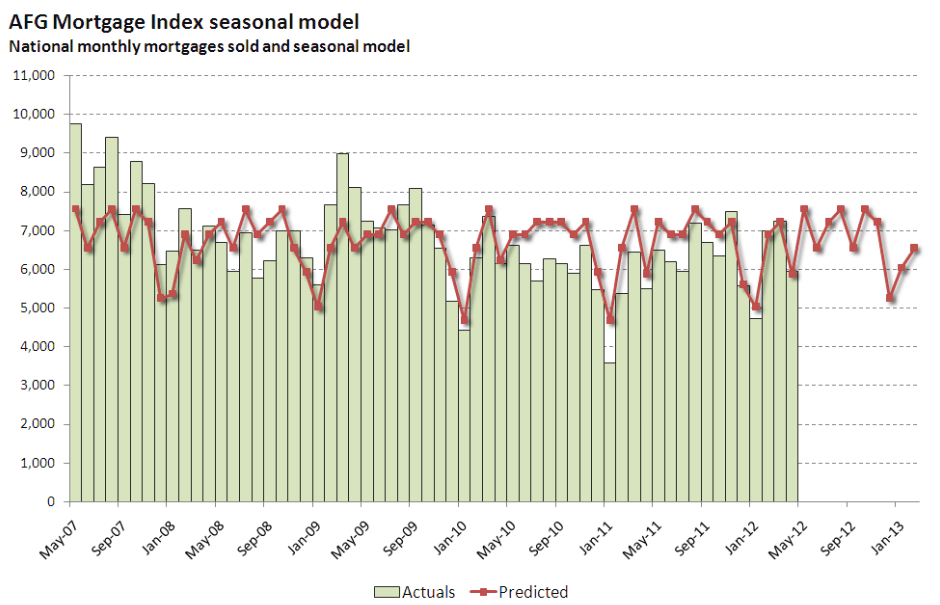
However the purpose of this model isn’t to predict the AFG headlines, but rather to predict the flow-on to the broader housing market, and prices in particular. The next chart shows the difference between the prediction and the actuals, which is the basis of all of the other charts. This shows that the last few months have seen very little divergence and a levelling off. The latest result continues that trend.
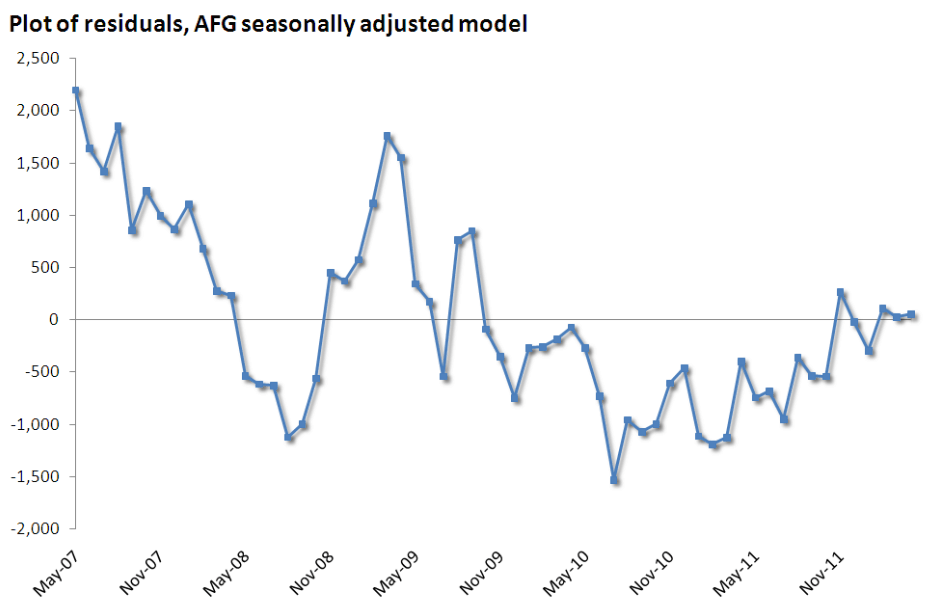
The next chart shows the SQM change in stock on market (3-month m.a.), and the prediction here is for stock levels to remain fairly constant over the next few months.
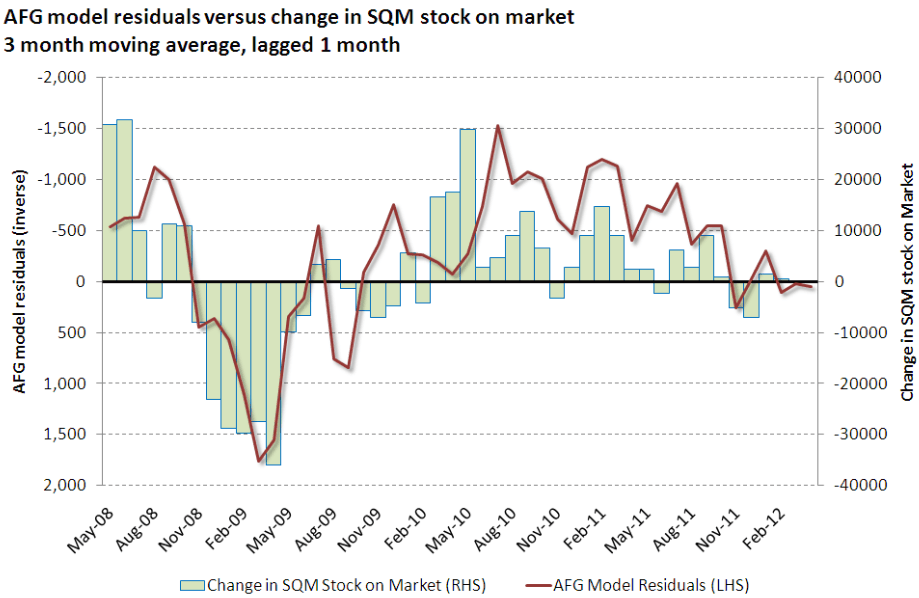
Now let’s have a look at house values. With the change to daily updates, I have had doubts about the validity of the RPData series. In particular, the volatility of the index has increased markedly. Here is the monthly comparison with a 6 month lag, showing the difference that moving to the new index has made. It is definitely more volatile, and pretty much useless for these purposes.
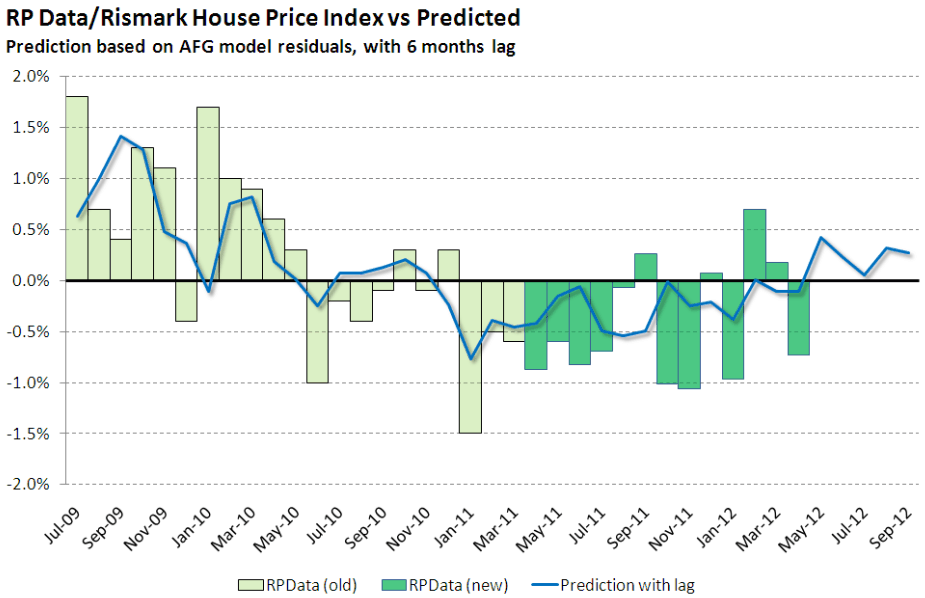
Averages can help to remove volatility, and show the underlying trend. I’ve finally managed to look further into the data, and have included a 3 month moving average comparison. The correlation here is very high, at 0.89 with a 6 month lag, and provides good confirmation that the AFG data can provide a 6 month leading view of price changes.
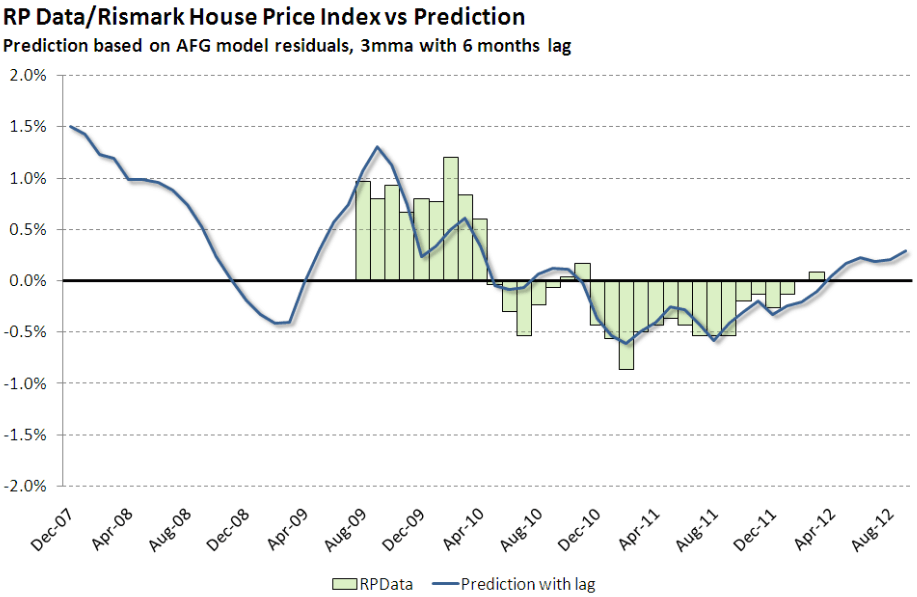
This chart is clearly indicating price growth over the next 6 months, but not very much. Look at that scale – it’s forecasting around 0.2-0.3% growth per month, or around 3% per annum. There’s a lot of uncertainty with this as well, and while the numbers don’t show any signs of a crash in 2012, it’s not signalling strong growth either. So let me say then that if you’re hoping for big price changes in either direction, 2012 will most likely be a frustrating year.
Finally, to round out the charts, here is the comparison with the ABS house price series, which was updated earlier this week. I only have one month’s worth of AFG data for the latest quarter, so take that little uptick at the end with a decent pinch of salt. The chart is showing a divergence between the prediction of slightly positive growth versus the March preliminary estimate, which fell 1.1%. That estimate can be revised twice, and I would hazard to guess that it will be revised upwards. The Dec-2011 figures have been revised once, from -1.0% to -0.7%, and might be revised again next quarter.
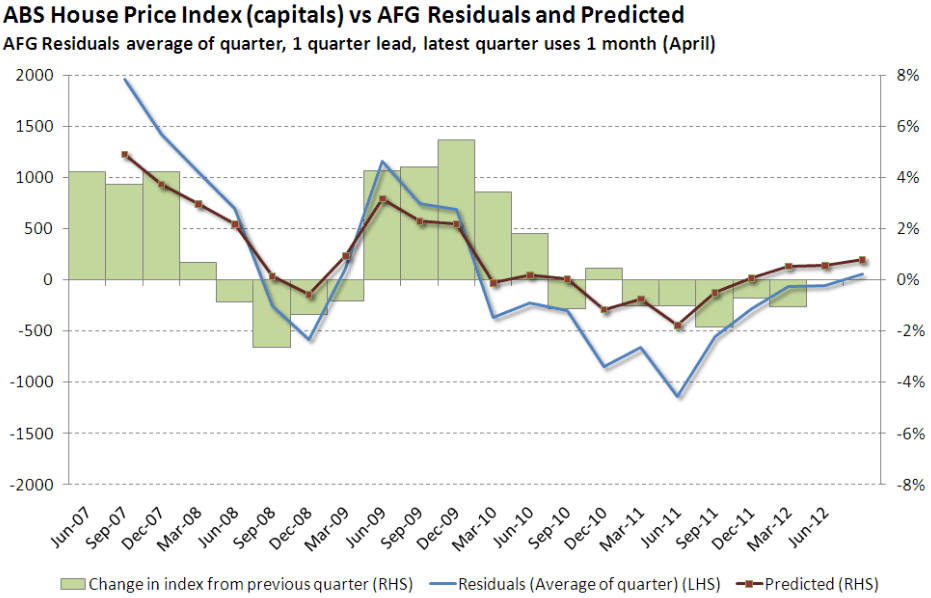
Looking across the charts, it looks to me like the next few months will be more of the same. The last 2 weeks of April saw some big drops in the RP Data indices, but prices are still roughly the same over the last 3 months. Given the volatility in that series, I would expect to see some big falls, followed by some big rises, for an overall flat outcome over the next half-year.

